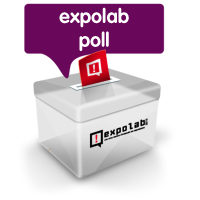Last May 13th the last workshop (for now) in the series about 2.0 practices for cultural institutions, part of the Citilab-Expolab/CCCB-Lab collaboration took place in Citilab.
We went through the process of inviting participants to reflect while doing. That is, to build their own prototypes of possible participatory projects in their institutions (or outside them) and start a design iteration that included role playing, scenario building and discussion.
Global screen: 10 windows to the world
A project that is scheduled to exhibit for 2011.
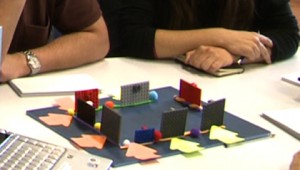 It aims to put in evidence the power of screens in contemporary society.
The screen as an interface that connects to the world.
This is part of an online and offline exhibition revolving around different types of screens:
It aims to put in evidence the power of screens in contemporary society.
The screen as an interface that connects to the world.
This is part of an online and offline exhibition revolving around different types of screens:
- The screen as a manifesto or the political screen.
- The game screen (entertainment-oriented and educational among children).
- The social screen (the visual interface as an agora) and so on.
The exhibition will consist of a journey through a continuous screen. The pieces will be comissioned to video artists and artists in this field. Also, it will be open to people so that they can create materials to be integrated in the exhibition. Visitors to the site or internet users will be able to add personal interventions and build their own reflections on them. These will be linked thematically to the type of screen that corresponds to the reflection either because they are confronting the screen created by and artist or reinforcing it, the user contribution being an example of what is meant by the artist. It will also open a dynamic web platform that will receive content before the exhibition opening. At the same time, the exhibition raises the possibility that the contents can continue to evolve once the offline exhibition closes. The main screen in the physical space will portray images of the visitors/participants taken from different angles while they are still visiting, so that participants can reflect about privacy.
I have a show at Caixaforum
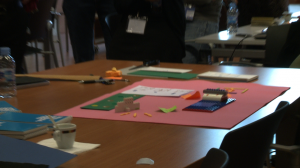 The goal is difussion, i.e., to generate public attraction and actual visits to an exhibition, and thus “build up brand” for the cultural center.
We propose a contest that will be accompanied by traditional advertising as well as 2.0 campaigns on social networks, etc.
It may invite uploading pictures or videos on YouTube, pieces of music, etc.. It will not require to use a specific artistic format.
Users will be able to vote for the pieces. This voting can take place through the usual online communication channels.
A jury or a similar institution will select the works presented, which will be eventually exhibited at an exhibition center.
Different types of awards will be established
. Also, the winners will be encouraged to participate in a workshop explaining their experience as well as the ideation and creation process of their piece.
The goal is difussion, i.e., to generate public attraction and actual visits to an exhibition, and thus “build up brand” for the cultural center.
We propose a contest that will be accompanied by traditional advertising as well as 2.0 campaigns on social networks, etc.
It may invite uploading pictures or videos on YouTube, pieces of music, etc.. It will not require to use a specific artistic format.
Users will be able to vote for the pieces. This voting can take place through the usual online communication channels.
A jury or a similar institution will select the works presented, which will be eventually exhibited at an exhibition center.
Different types of awards will be established
. Also, the winners will be encouraged to participate in a workshop explaining their experience as well as the ideation and creation process of their piece.
The process would be as follows:
- Classical unidirectional campaign in traditional media
- Viral/Participatory Campaign inviting to participate in the contest
Some important aspects
- Diversity: each work is accompanied by certain personal data which will help in distributing the prizes among different user profiles.
- Aggregation of the works: a system for sending, rating, receive and evaluate the submitted information
- Workshop: by which users will discuss the process of creating the pieces, and help in the redefinition of the event for the following year.
Theatre 2.0
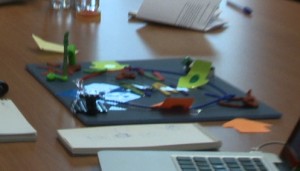 A play that starts from scratch, based on an initial survey about what matters to people as spectators.
That survey is organized from Twitter and Facebook asking for keywords that define the theme of the theatrical work.
Interviews and surveys at street level are also used, specially for users who do not have Internet access or do not use it.
In social networks questions are also posed and / or possible views with inputs such as news, photos, or other aesthetic props to stimulate response.
It therefore seeks to cause feedback on the process while integrating new keywords.
The seed keywords at the beginning are Twitter # hashtags used in networks close to the people that drive the initiative.
After collecting data on the most interesting topics and contents an script outline of a play is made.
The theatrical work is organized with co-writing partners, and it is presented in a real theatrical venue and broadcasted by videostreaming.
It is open to decide if the performance can also be “open” in real time while acting (either in person by the viewers at the theater or via online channels).
In order to publicize the work all the social capital generated during the creation of the outline and the co-creation of the script will be used. The feedback after the performance, personal assessments, etc. will be also collected and shared.
The profile of users involved in the survey, as well as writers and actors, could allow people to get into the learning process or even act as “spontaneous” or amateurs.
It can also be a valid project to recruit new talents.
A play that starts from scratch, based on an initial survey about what matters to people as spectators.
That survey is organized from Twitter and Facebook asking for keywords that define the theme of the theatrical work.
Interviews and surveys at street level are also used, specially for users who do not have Internet access or do not use it.
In social networks questions are also posed and / or possible views with inputs such as news, photos, or other aesthetic props to stimulate response.
It therefore seeks to cause feedback on the process while integrating new keywords.
The seed keywords at the beginning are Twitter # hashtags used in networks close to the people that drive the initiative.
After collecting data on the most interesting topics and contents an script outline of a play is made.
The theatrical work is organized with co-writing partners, and it is presented in a real theatrical venue and broadcasted by videostreaming.
It is open to decide if the performance can also be “open” in real time while acting (either in person by the viewers at the theater or via online channels).
In order to publicize the work all the social capital generated during the creation of the outline and the co-creation of the script will be used. The feedback after the performance, personal assessments, etc. will be also collected and shared.
The profile of users involved in the survey, as well as writers and actors, could allow people to get into the learning process or even act as “spontaneous” or amateurs.
It can also be a valid project to recruit new talents.
e-learning school
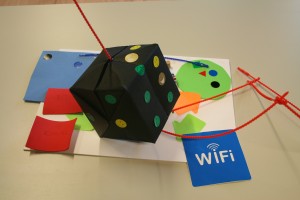 It proposes as a training school based on online participation. It
comprises three zones or areas: a virtual classroom with original content, an area used for dumping or recycling, and (most important) a methodology and tools for participation.
Users of the project are teachers, promoters, students and companies (the latter are permitted to make case studies).
The contents of the courses change every day, thanks to the contributions and participation of users.
The key is finding the motivation to generate content among all, especially case studies in business.
This virtual education is based on network profiles and thematic interests and portfolios and content generated by each user / participant.
We propose also a section for trainers to post their content, but could also be students who do it
Another key issue related to the project is to locate the information that should be categorized hierarchically and / or folksonomies.
The repository should help sort reviews, teaching materials, examples, etc..
The challenge is that the contents are based on real case studies, to enable meaningful learning.
It proposes as a training school based on online participation. It
comprises three zones or areas: a virtual classroom with original content, an area used for dumping or recycling, and (most important) a methodology and tools for participation.
Users of the project are teachers, promoters, students and companies (the latter are permitted to make case studies).
The contents of the courses change every day, thanks to the contributions and participation of users.
The key is finding the motivation to generate content among all, especially case studies in business.
This virtual education is based on network profiles and thematic interests and portfolios and content generated by each user / participant.
We propose also a section for trainers to post their content, but could also be students who do it
Another key issue related to the project is to locate the information that should be categorized hierarchically and / or folksonomies.
The repository should help sort reviews, teaching materials, examples, etc..
The challenge is that the contents are based on real case studies, to enable meaningful learning.
Hiker Association
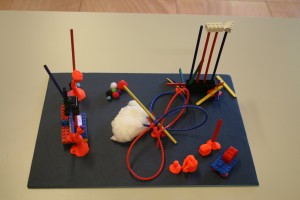 An open platform that serves to promote and relaunch an mountain hiking association which currently has a low activity.
Reasons? Generation gap and a lack of knowledge sharing with new people who approach the association with the intention of joining as a member.
The project tries to transcend the limitations of face to face meetups for outdoor hikes.
It should have a bank of resources and tools as well as tutorials on hiking for beginners.
It would also show how to take advantage of content based on the knowledge of the territory.
The possibility of geolocating itineraries and, thus, enhance the sharing of routes, ideas and favorite locations is also envisaged
An open platform that serves to promote and relaunch an mountain hiking association which currently has a low activity.
Reasons? Generation gap and a lack of knowledge sharing with new people who approach the association with the intention of joining as a member.
The project tries to transcend the limitations of face to face meetups for outdoor hikes.
It should have a bank of resources and tools as well as tutorials on hiking for beginners.
It would also show how to take advantage of content based on the knowledge of the territory.
The possibility of geolocating itineraries and, thus, enhance the sharing of routes, ideas and favorite locations is also envisaged
If you want to see more photos from this event, you will find them in Flickr!
